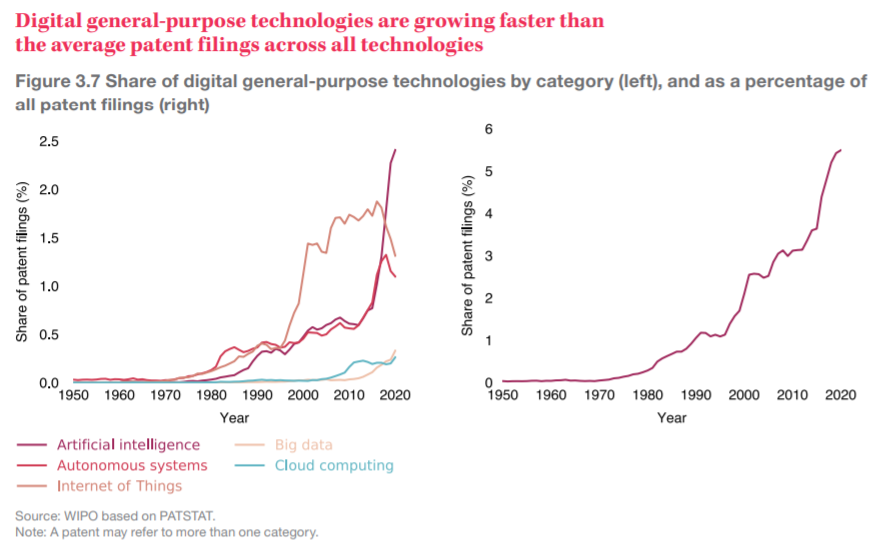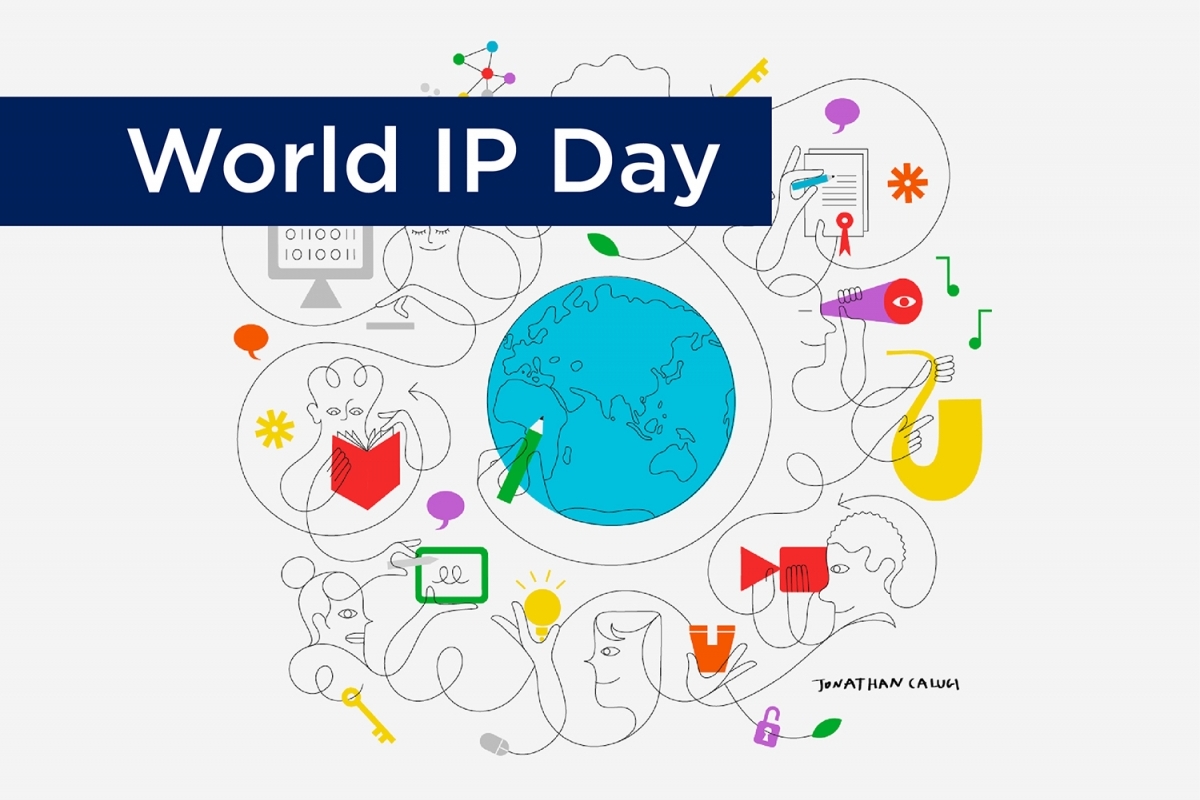The impact of intellectual property
The World Intellectual Property Organization (WIPO) defines IP as ‘the creations of the mind such as inventions; literary and artistic works; designs and symbols, names and images used in commerce’. It ranges from simple and recognisable brand symbols to complex and revolutionary software systems, including cloud computing services. IP rights (IPR), in turn, give creators the exclusive right of their ideas and allow them to monetise their innovations for a given period of time – and their impact is extraordinary.
IP constitutes the second biggest digitally enabled service trade sector between the EU and the US. In 2021, IP charges (payments given or received through the enforcement of IP rights) made up 26% of the US’s digitally enabled service exports to the EU and 20% of the EU’s digital service exports to the US.
However, IP isn’t just a source of income. First and foremost, it is a tool to encourage research in innovative and sustainable solutions and technologies. For instance, by relying on robust IP rights and protection, RDTS Technologies has developed the world’s first safety system that manipulates road and railroad surfaces to provide optimal braking traction against water, sand and other surface contaminants. With the right safeguards in place, IP can improve our lives.
Youth: an IP goldmine
To promote ground-breaking solutions like this, innovation at all levels must be encouraged. For this, we must develop a strong and cost-effective system to obtain, license and enforce all forms of IPR. Without sufficient support, young entrepreneurs can’t overcome the challenges they face to develop their creative innovations, including financial barriers, low visibility or a limited understanding of IP and incentive systems. With the accelerating pace of innovation, there is a greater need for creative, disruptive and sustainable solutions from Europe’s youth to face many of our most pressing challenges.
The digital hyperdrive is revolutionising the way we live, so it is equally important that our practices and IP tools evolve alongside our technology. No generation is as prepared for these changes as the youth of today. As digital natives, Millennials and Generation Z hold huge potential as a source of entrepreneurial innovation fused with an ambition to shape the world of tomorrow. Backed by a strong and efficient IP system, they have the potential to create extraordinary solutions that support the transition to a fully digital, sustainable and financially stable future.
To encourage these breakthrough innovations, a strong IPR system must support inventors and creators, online and offline. This requires, among others, sustained collaboration with IP enforcement agencies in third countries to facilitate information sharing on infringements and best practices. In addition, a more visible EU Counterfeit and Piracy Watch List and a soon-to-be-introduced Unitary Patent System would both enhance IPR protection. All of these objectives must also be in line with the existing regulatory tools and achieved through constant collaboration and stakeholder involvement.
At a time of growing competition in global innovation, it is essential that US and European policymakers cooperate on IPR challenges through the Trade and Technology Council to harness and enhance technological leadership on both sides of the Atlantic. But, as IP becomes an essential asset for every economy in the world, policymakers must also listen to our new cadre of emerging business leaders. With the right level of collaboration, future generations will have the cornerstone they need to build a better future.
IP is an area of increasing strategic importance – so let us work together to seize new opportunities, overcome common challenges and make IP, innovation and creativity work for everyone, everywhere.
- Daren Tang, DG WIPO




